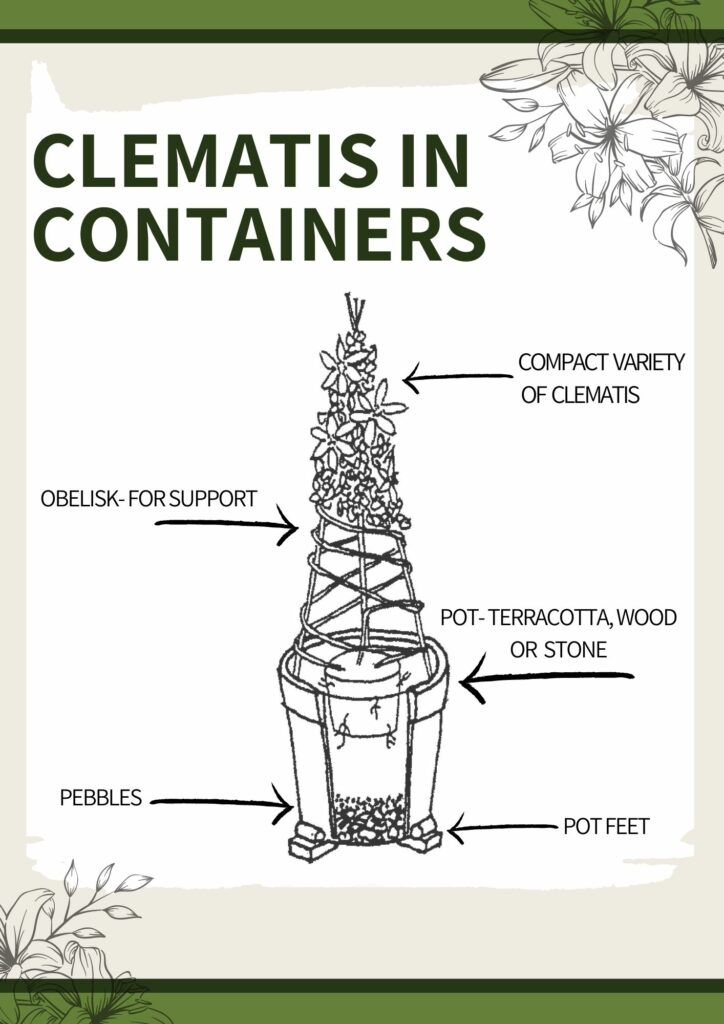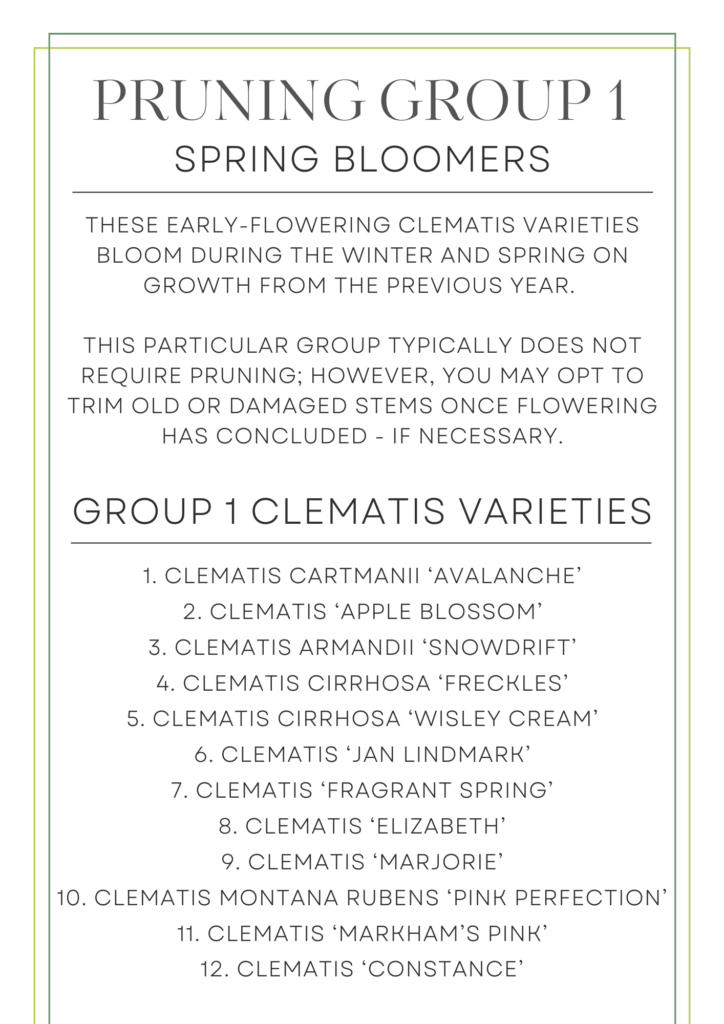Clematis, a highly favoured garden plant, yields abundant flowers in diverse shapes and colours. Whether opting for robust climbers or more compact varieties, including herbaceous types, our guide to Clematis equips you with the essential information to cultivate these plants in your garden.
What you Should Consider…
These perennial vines are renowned for their exquisite, large, and colorful flowers – which range in hues from white, pink, purple, and blue. With their stunning blooms and climbing habit, Clematis add beauty and elegance to outdoor spaces – some varieties also offer repeat blooms throughout the season.
Size & Habit
Would you like to liven up a wall, fence, or pergola? Climbing Clematis are perfect for this. The majority of climbing Clematis reach 3m in height, climbing varieties include:
- Clematis Taiga
- Clematis Nelly Moser
- Clematis Rouge
Or are you looking to fill a mixed border? Then a herbaceous Clematis is for you. Herbaceous Clematis grow between 75cm – 1.5m tall (with a spread less than 1m), some examples of these are:
- Clematis Alba
- Clematis Arabella
- Clematis Princess Kate
Flowers (Size, Colour, Time of Year)
Some varieties of Clematis bloom continuously over an extended period, whereas others yield a single large burst of flowers. Therefore, it is important to consider what time of year you’d like your Clematis to flower. Most herbaceous Clematis flower during the summer, whilst climbing Clematis can be divided into:
- Winter & spring-flowering
- Early-summer-flowering
- Late summer & autumn-flowering
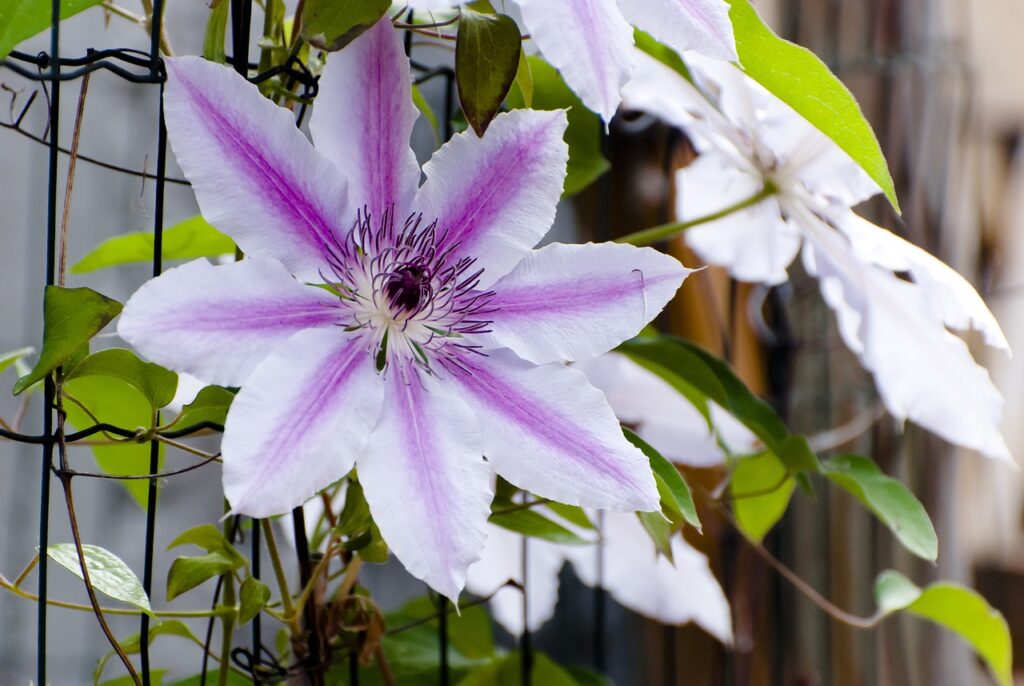
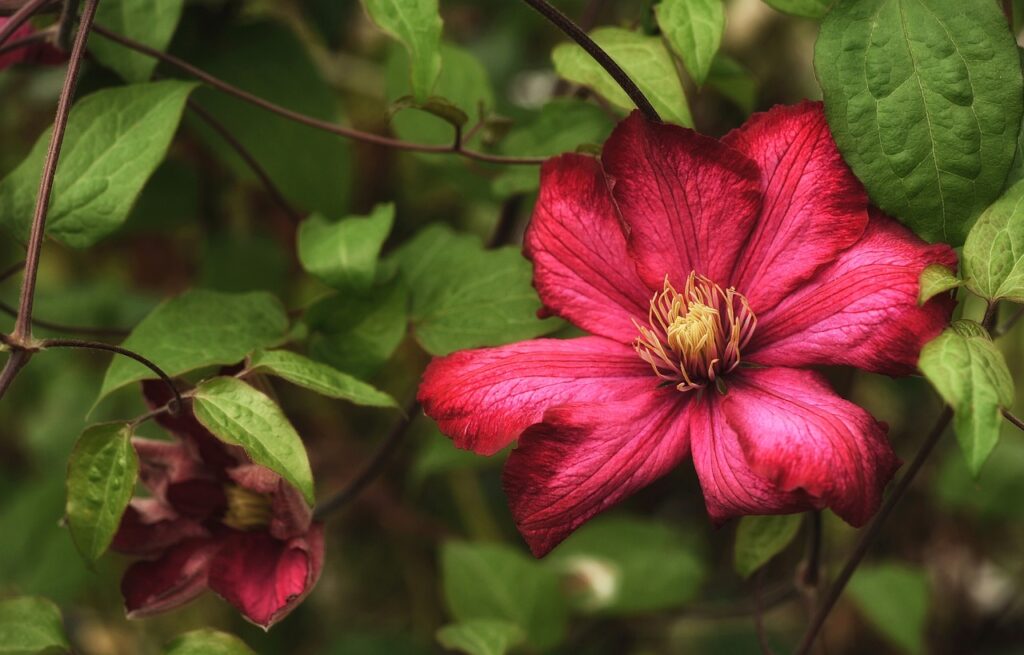
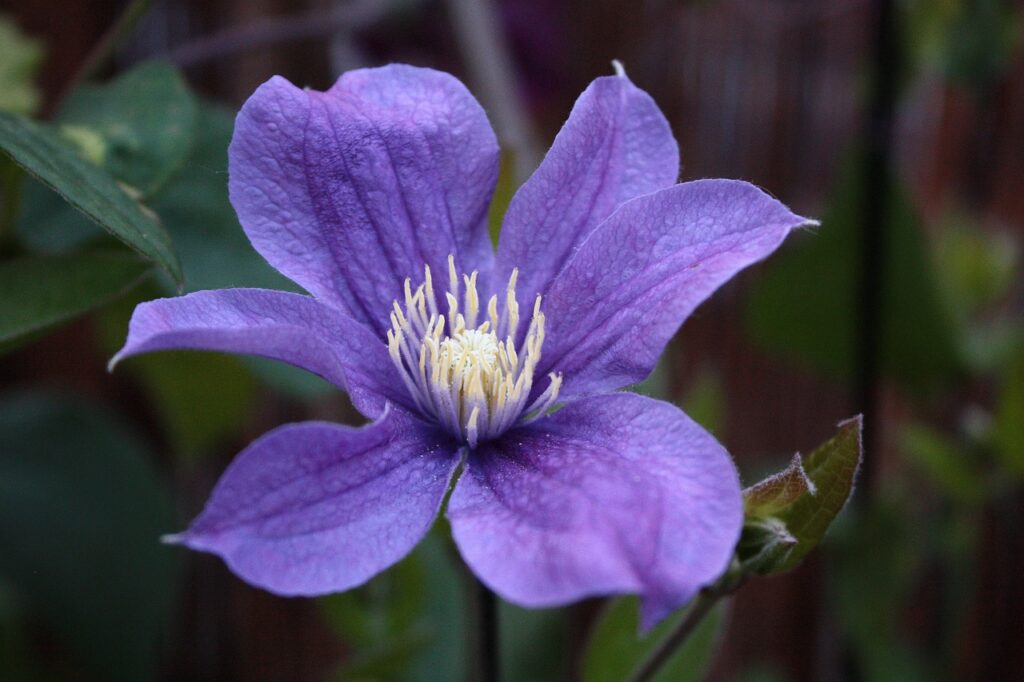
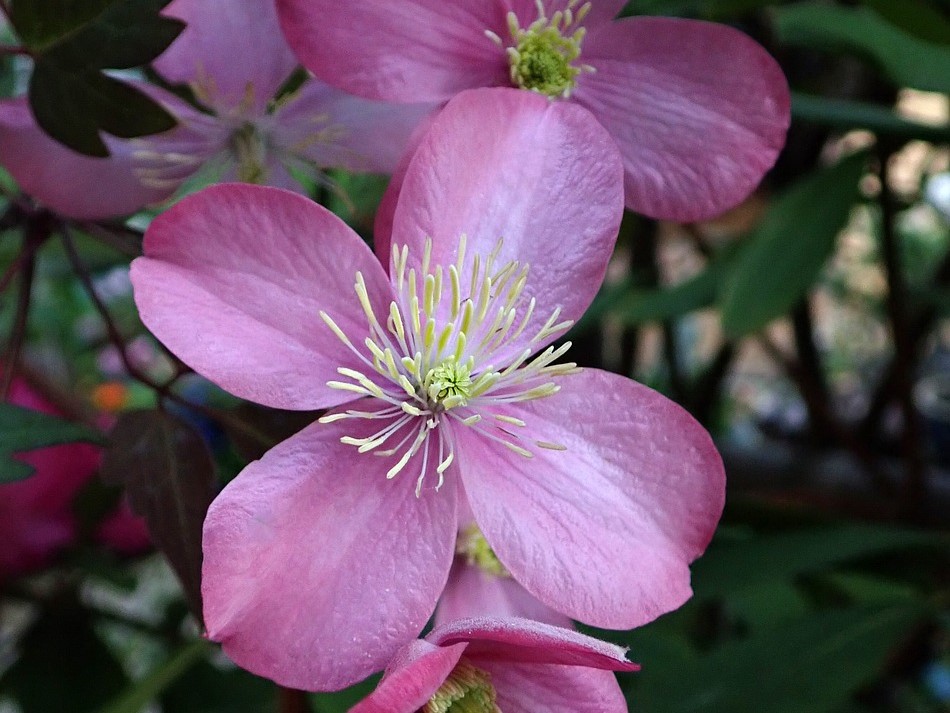
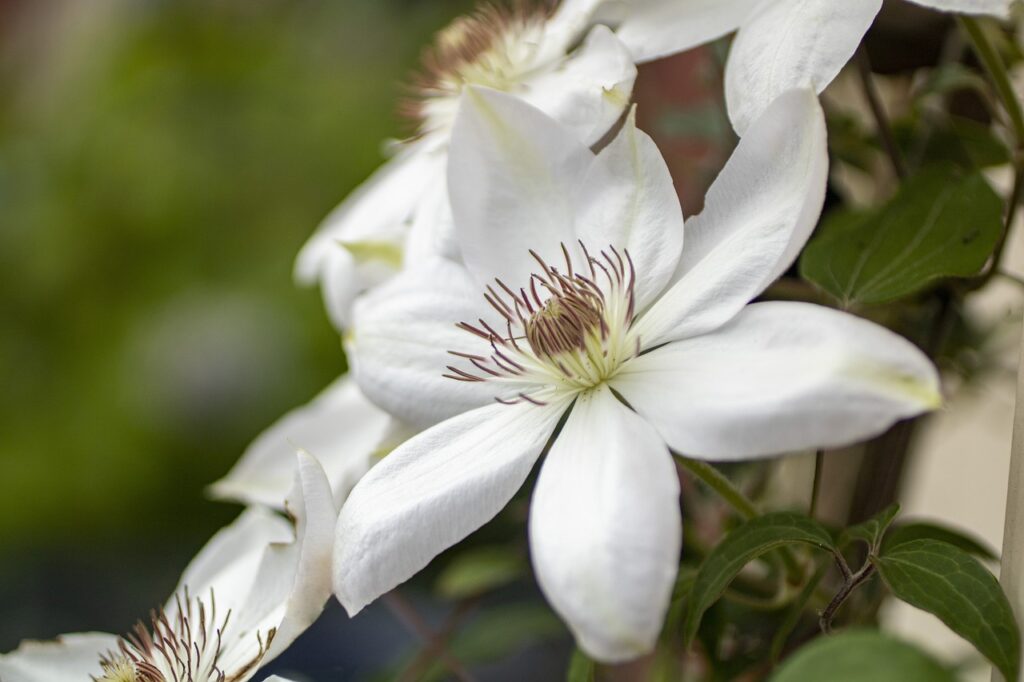
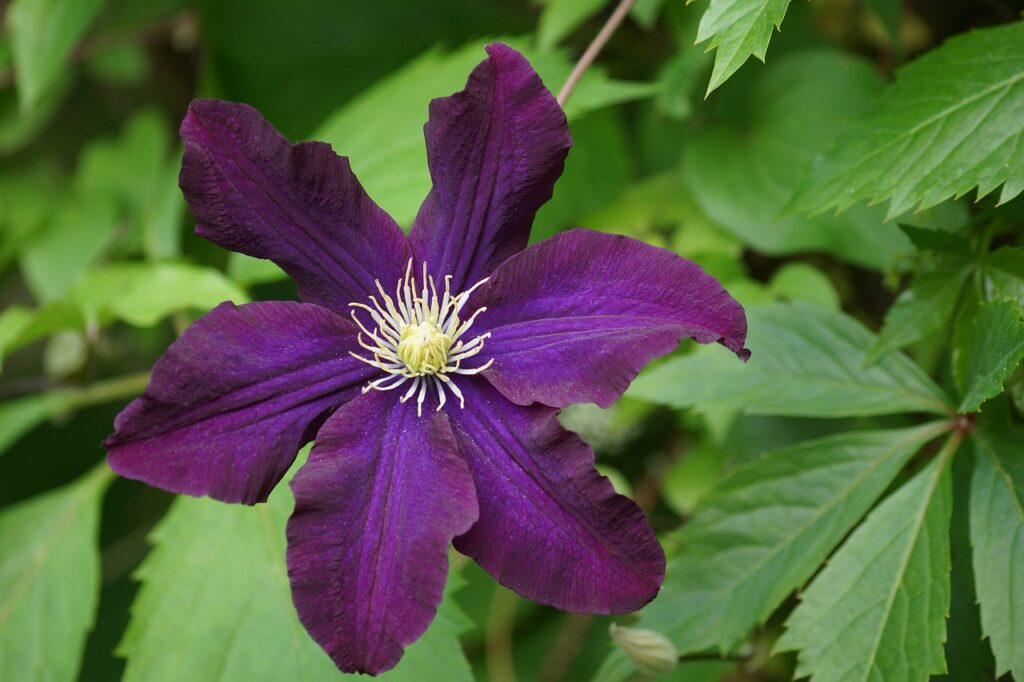
Planting your Clematis
Clematis grow best in moist but well-drained soil.
Follow this step-by-step guide to Clematis planting:
- Before planting, soak your new plant in a bucket of water for about 10 minutes
- Dig a hole that is roughly 45cms in both width & depth
- Lightly fork the sides and base of the hole – this will encourage good root growth
- Back fill the planting hole with a mix of topsoil, a handful of bone meal and multi-purpose compost
- Dig a hole in the planting mix, deep enough to allow the top of the root ball to be 5cms below the soil surface
- Place the plant into the hole, back fill with the planting mix and firm down
When to plant
The best times for planting are:
- Spring – March to the end of May
- Early to Mid-Autumn – End of August to Mid-November
- The warm, moist soil during these periods encourages good root establishment.
- Container-grown Clematis need to be planted as soon as possible, with regular watering
- Always avoid planting your Clematis into waterlogged or frozen soil, and periods of drought
Where to plant
- Herbaceous Clematis need full sun
- Herbaceous varieties grow best with plant supports or into nearby shrubs
- Climbing Clematis need partial shade for their roots – this can be achieved with surrounding plants or pebbles
- Climbing varieities will need to be tied to a trellis or mesh on a wall or fence
- Winter & spring-flowering evergreen varieties are not hardy so require a sheltered spot
- Ensure that you have enough available space for your plant to grow into
Watering & Feed
Lots of water will be required during the growing and flowering season. If not enough water is given, flower buds will not develop.
Liquid feed with ‘Miracle-Gro’ up to and after flowering. Never liquid feed a dry plant as this will burn the roots!
- Newly planted Clematis should be watered consistently during dry periods in the initial few seasons after planting
- Established Clematis do not need regular watering – unless there is a pro-longed hot, and dry period
- Container-grown Clematis require more attention as the soil will dry out quicker
- These will need to be watered for most days from April to October
Top Tips:
For containers – use an obelisk as the support and train the stems around it rather than straight up, the resulting display will be much bolder.
Don’t feed with liquid fertiliser when it is flowering as this will shorten the flowering period.
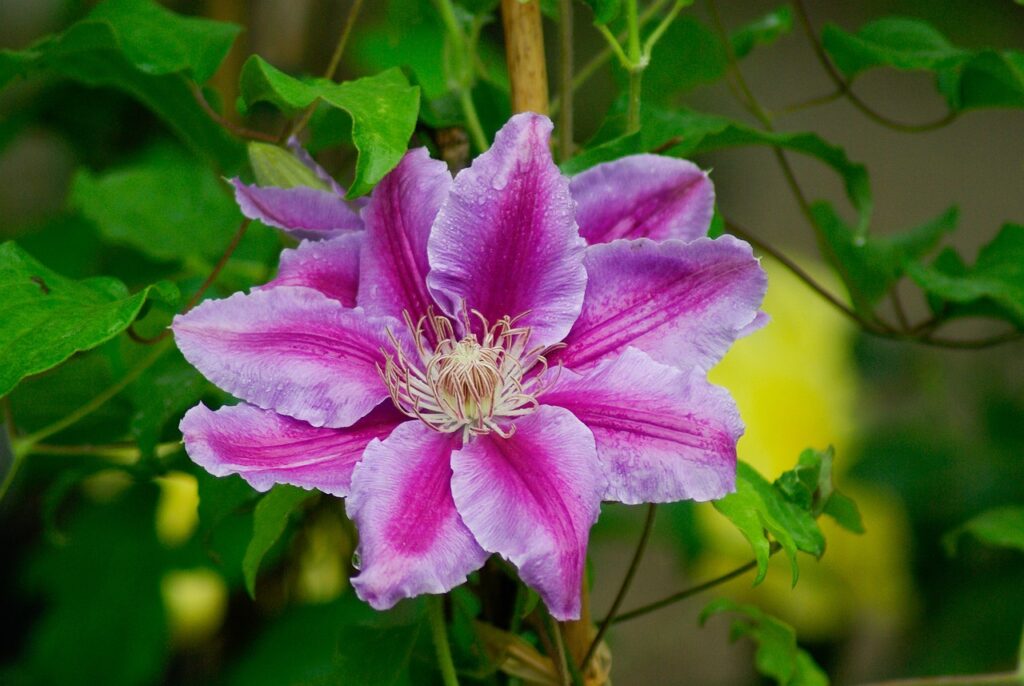
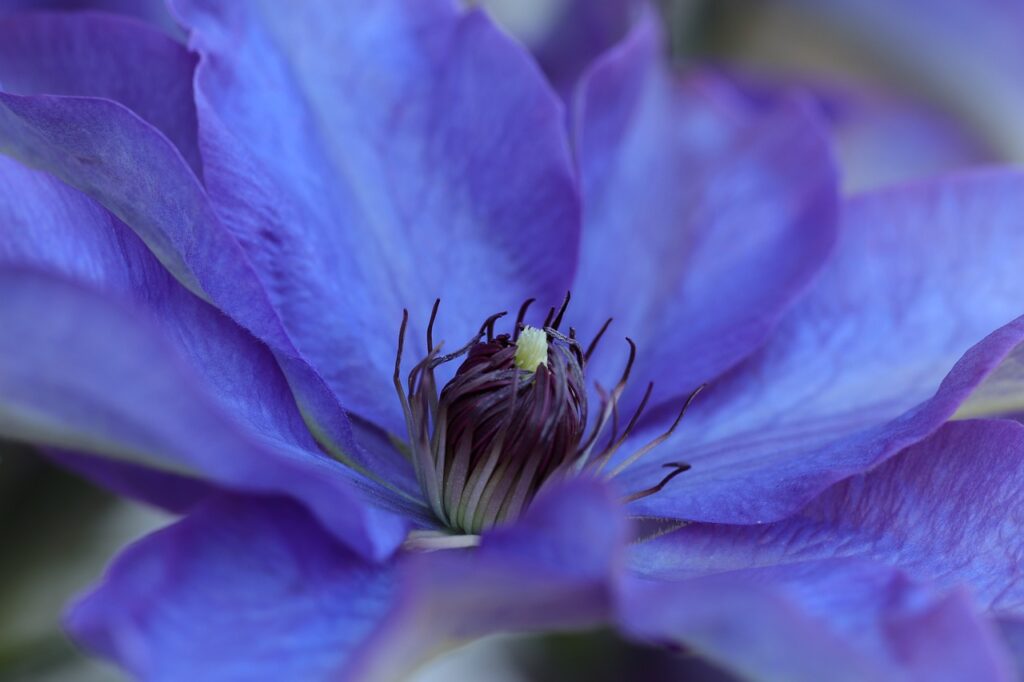
Clematis in Containers
Clematis may be grown in containers as long as certain points are adhered to. The most important being the choice of Clematis.
- Choose your Clematis – it needs to be a compact, bushy and free flowering variety. The early large flowered hybrids are ideal for this (i.e group 2)
- Pick your pot – Plastic pots will not be able to keep the roots cool in summer or warm in winter, therefore it is best to stick with wood, stone or terracotta. Also consider size – ideally it should be no less than 45cm deep and 40cm across as well as having good drainage holes
- Place 6cm of pebbles over the drainage holes, then cover this with a thin layer of pea gravel
- Raise the pot off the ground by using pot feet
- Fill the pot with a 50/50 mix of John Innes No.3 and Multi-purpose compost – each Spring replace he top 6cm with fresh compost
- Plant the Clematis into the pot as described earlier
Support for your Clematis
If plants are to be grown up a wall, a cane is required to support the stems to the trellis or wires. Alternatively, for a free standing plant, use 1.8m canes as wigwam. New shoots need to be trained around the wigwam, not straight up the canes. By starting as low as possible this will ensure flowers all over and not just at the top.
Types of Clematis
We can categorise established Clematis into 3 pruning groups, see below a guide to Clematis groups based on their pruning requirements:
If you found our guide to Clematis useful and are looking for more gardening advice, click here to discover more of our gardening guides.
